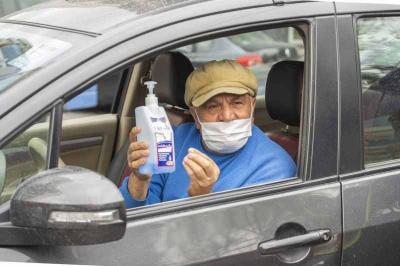12.7% is the percentage of positive COVID-19 tests, surpassing the normal rate of about 4% during the last month of the previous year. Essentially, this spike indicates that the virus has moved past a phase of relative calm, regaining activity alongside the emergence of a new variant (XXB 1.5), a branch of the "Omicron" variant, notably characterized by its rapid spread in several countries. Within three weeks, the COVID count has shifted dramatically. For about a week now, the numbers have been rising slowly, surpassing a hundred cases, with 141 reported a couple of days ago, up by 100 cases from the start of last month (47 cases on December 2 with no recorded deaths). This upward trend has also coincided with an almost daily increase in the death toll, with one reported death each day.
The recent indicators of the virus raise concerns about a potential rise in fatalities, especially given the current situation in hospitals, as the number of patients needing hospitalization has increased. The number of beds used in regular isolation rooms rose from 27 beds (6% of the total beds in COVID-designated departments) to 87 beds (19%), while the number of occupied beds in intensive care units for patients on respirators increased from 12 beds (about 7% of the total units) to 26 beds (14%). This trajectory, which has now placed the country in the third phase of contagion, signals the onset of a new stage of virus infection, as announced by Minister of Public Health, Firas Abyad, confirming, “A wave of COVID has reached Lebanon coinciding with increased social interactions during the holiday season.”
Three Factors for Spread
For his part, Dr. Eid Azar, head of the COVID vaccine executive committee, summarizes the reasons for this wave into three factors. The first is social interaction, noting that "this spike in cases has become annual during the holiday season." Along with this factor, Azar adds the mutations that the virus undergoes, which "always seeks new forms to evade immunity." According to the World Health Organization, this variant has gained the ability to transmit and spread, as it has “14 new mutations that provide it with enhanced resistance to antibodies,” although “the good news is that it causes mild illness similar to its predecessor.” The third and most significant local factor is the weakness of community immunity, Azar asserts decisively. Here, there are two main reasons: the "slowdown" in the vaccination process and its halt at several centers, with the quantities returned to the quarantine center far exceeding those delivered. Reports may serve as clear evidence of the vaccination trajectory, as indicated by the latest reports from the Ministry of Health dated December 27, which show that the number registered on the platform to receive the vaccine that day reached 308 people, while 2 received the first dose, 10 received the second, and 5 received the third dose. Overall, the percentage of vaccinated individuals with the first dose reached 71.2%, 50.3% for the second dose, and 27.3% for the third, with younger individuals being the most reluctant to get vaccinated, according to Azar.
Secondly, Azar refers to the delays in obtaining the specific vaccine to combat Omicron and previous variants. This delay persisted for a long time before the French donation finally arrived, hoping for swift distribution to centers so that the situation does not worsen, targeting the first group, which is "the elderly, especially since we now have experience that COVID prefers the elderly, with most patients needing hospitalization being over 80 years old."
Revitalizing Vaccination
The challenge today is to restore the vaccination process, especially as the current wave of the virus coincides with a severe outbreak of seasonal influenza, putting us in a fragile situation, “especially since the economic conditions are not in our favor, as well as the health situation and healthcare institutions that will not be able to cope as they did before,” says Dr. Abdul Rahman Al-Bizri, head of the National COVID-19 Vaccination Committee. While the vaccination process struggles, some countries, including the United States, are moving toward implementing what is called an annual vaccination, similar to seasonal flu.
So what can be done today alongside enhancing the vaccination process? In the absence of decisive measures, nothing may alleviate the wave except for "each citizen to take care of themselves by adhering to preventive measures such as wearing masks and reducing gatherings."




